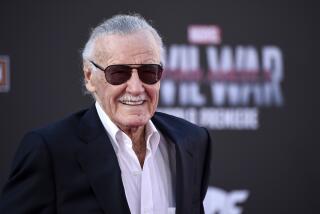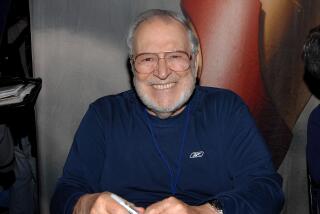Comics’ true hero
- Share via
YOU can have your Batman, your Superman, your Aquaman and all the other super-dupermen (and women) one wants represented at the current Museum of Contemporary Art exhibit on American comics, but the absence of Carl Barks is inexcusable and insupportable [“Serious Respect for the Funnies,” by Alex Chun, Nov. 12, and “Serious About Comics,” by Geoff Boucher, Nov. 17].
Barks’ erudite inventions for Walt Disney Comics, from Uncle Scrooge McDuck to the city and environment and fully realized citizens of Duckburg, USA, had a profound and positive influence on generations of American children and artists, including George Lucas and Steven Spielberg.
Compounding his unique status in comics, Barks both wrote and drew nearly all his stories. In contrast to the typical superheroes of the time, the eminently fallible characters he created, replete with individual jealousies, physical ailments and personal obsessions, anticipated by half a century such imperfect comic protagonists as those found in the Sandman and Watchmen stories.
Perhaps most significant, Barks’ characters persevered, survived and won out through difficult and dangerous circumstances not because of but despite a lack of superpowers or supernatural abilities.
As Scrooge himself (the only true senior citizen hero in the history of American comic books) put it, “I made my money by being smarter than the smarties and tougher than the toughies ... and I made it square.” To a comics reader growing up in the 1940s, ‘50s, and ‘60s, that was a far more important and lasting lesson than knowing that kryptonite will getcha if you happen to hail from some far-off world.
ALAN DEAN FOSTER
Prescott, Ariz.
Foster is the author of numerous science-fiction novels and other works.
More to Read
The biggest entertainment stories
Get our big stories about Hollywood, film, television, music, arts, culture and more right in your inbox as soon as they publish.
You may occasionally receive promotional content from the Los Angeles Times.










